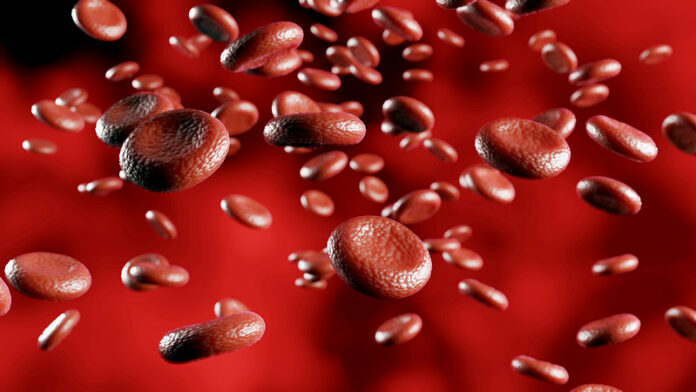[ad_1]
In a new analysis of the MATRIX trial data, a fall in hemoglobin of 3 g/dl or more in a patient hospitalized with acute coronary syndromes (ACS) and managed invasively — but with no evidence of overt bleeding — was associated with an increased risk of death at 1 year.
Among the 7781 patients enrolled in the previously reported MATRIX trial, for whom hemoglobin data were available, 83.6% had a hemoglobin drop on the basis of baseline and nadir hemoglobin values. Of these, 11.5% had an adjudicated overt bleeding event.
The majority (91.4%) of hemoglobin drops were deemed minimal (<3 g/dl). Only 399 of 6504 patients, or 6.1%, had a hemoglobin drop of ≥3 g/dl without overt bleeding. An additional 158 individuals, or 2.4%, had a hemoglobin drop ≥3 g/dl with evidence of overt bleeding.
Among ACS patients without overt bleeding, a minor fall in hemoglobin (≥3 and <5 g/dl) was independently associated with a greater than twofold increase in the risk of mortality at 1 year (hazard ratio [HR], 2.37; P = .004).
However, there was no statistically increased risk of mortality in individuals with larger drops in hemoglobin (≥5 g/dl from baseline), without overt bleeding (HR, 2.58; 95% CI, 0.98 – 6.78; P = .54), although only 74 patients met these criteria.
“The novelty here is that we had enough power to look into the hemoglobin drop without bleeding and found important prognostic impact, which went clearly beyond overt bleeding per se,” said Marco Valgimigli, MD, PhD, from the University of Bern, Bern, Switzerland, adding that theirs is one of the largest studies focusing on this entity.
Valgimigli and first author Sergio Leonardi, MD, MHS, University of Pavia and Fondazione IRCCS Policlinico S. Matteo, Pavia, Italy, published their findings in the February 2 issue of the Journal of the American College of Cardiology.
In those with a hemoglobin drop >3 g/dl with overt bleeding, 1-year mortality was directionally similar but with wider confidence intervals (minor: HR, 3.53 [95% CI, 1.06 – 11.79] and major: HR, 13.32 [95% CI, 3.01 – 58.98]).
About this finding, Valgimigli said: “It reflects the fact that we focused on significant hemoglobin drop in the absence of overt bleeding and further, the need to correct for potential unbalances in a multivariable model, which enlarges the confidence interval.”
“Do not forget that the outcome is 1-year death, which luckily is occurring in a small minority of patients,” he added.
Many contemporary definitions of bleeding endpoints are restricted mostly to clinically overt events and do not accommodate occult bleeding events. However, others, including the International Society of Thrombosis and Haemostasis and ACUITY HORIZONS, do include hemoglobin drop without overt bleeding in their scales.
“If we speak of minor or major hemoglobin drops, I personally believe the majority of them are linked to occult blood loss, most likely mainly GI related. If we speak about less than minor falls in hemoglobin (ie, less than 3 g/dl), then probably the majority are not related to real blood loss,” said Valgimigli.
“This is, of course, an assumption, but it is fascinating to see that this entity starts to become prognostic using a cut off of 3 g/dl,” he added.
An accompanying editorial suggests that the findings of Valgimigli and colleagues “expand current knowledge” but care should be taken not to overinterpret the findings, and they do not clearly necessitate a major change in how bleeding is classified in ACS.
“It is important not to miss a prognostically important endpoint; however, care should also be taken to avoid overinterpreting a benign condition,” write Olivier Barthélémy, MD, Sorbonne University, Paris, France, and colleagues.
They also noted that in a sensitivity analysis that excluded patients with preexisting anemia at baseline, the finding of increased mortality at 1 year with a hemoglobin drop of ≥3 was no longer significant (HR, 1.71; P = .12).
Minimal variation in hemoglobin is “very common” during percutaneous coronary intervention or ACS and can be related to a variety of factors, including hemodilution, periprocedural loss, or hospital blood draws, the editorialists write.
They note that in the study, individuals with higher baseline hemoglobin values were more likely to experience hemoglobin drops. “Obviously, the higher the baseline value, the more likely an Hb drop may be observed.” The next step is to determine the “most relevant threshold of Hb drop predicting cardiovascular outcomes,” they conclude.
This MATRIX substudy did not receive any direct or indirect funding. Valgimigli has received grants and/or personal fees from a number of companies including Abbott, Terumo, AstraZeneca, and Daiichi-Sankyo, all outside the submitted work. Barthélémy has received travel and meeting support from Amgen, Bayer Healthcare, Boston Scientific, and Cardinal Health.
J Am Coll Cardiol. Published February 2, 2021. Abstract, Editorial
For more from theheart.org | Medscape Cardiology, join us on Twitter and Facebook
[ad_2]
Source link












